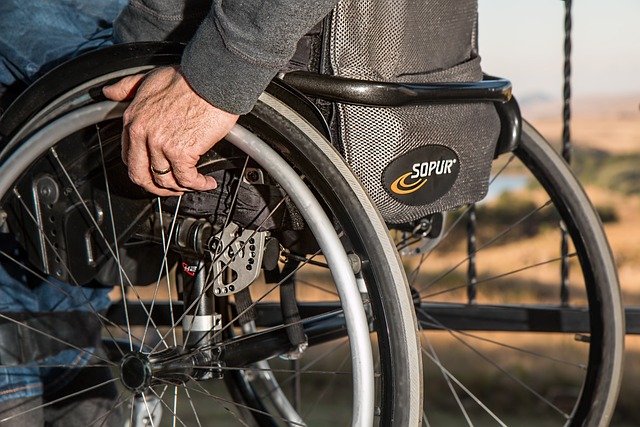For new drivers, understanding SR-22 (Financial Responsibility) insurance is crucial for legal driving and financial protection. This specialized coverage fills gaps left by standard policies, promoting accountability and reducing risks associated with inexperienced drivers. Required post-infractions or accidents, SR-22 includes liability, PIP, collision, and comprehensive coverage options. New drivers should compare quotes strategically, maintain a clean record, and avoid mistakes like undervaluing importance or missing renewal deadlines to secure affordable rates and uninterrupted coverage. Prompt claims response and building a pristine driving record further enhance the benefits of SR-22 Insurance.
New drivers often face unique challenges, and one significant hurdle is understanding SR-22 insurance requirements. This comprehensive guide aims to demystify SR-22 insurance for new drivers, highlighting its necessity after certain offenses. We’ll explore key components of these policies, strategies to find affordable coverage, common mistakes to avoid, the claims process, and tips for building a solid driving record post-SR-22 acquisition. By understanding these aspects, new drivers can navigate SR-22 insurance with confidence.
Understanding SR-22 Insurance Requirements for New Drivers

For new drivers, understanding SR-22 insurance requirements is crucial for navigating the roads legally and avoiding financial pitfalls. SR-22, or Financial Responsibility Insurance, is mandated by most states in the U.S. as a condition for obtaining a driver’s license, especially for those under 25 or with a clean driving record. This type of insurance serves as protection for future accidents, ensuring that drivers can cover the costs associated with damage to others’ property and medical expenses in case of an at-fault accident.
New drivers often face higher insurance rates due to their lack of experience behind the wheel. SR-22 insurance is designed to ensure they have adequate financial coverage, providing a safety net for both the driver and those they may potentially harm on the road. It’s important to remember that specific requirements vary by state, so new drivers should consult their local Department of Motor Vehicles (DMV) or insurance provider for detailed information tailored to their location.
Why Is SR-22 Insurance Necessary?

In many jurisdictions, SR-22 insurance is a legal requirement for new drivers. This type of insurance serves several crucial purposes, primarily ensuring financial protection for both the driver and others on the road. Without SR-22, young or inexperienced drivers might face significant financial burdens in the event of an accident, as traditional insurance policies often exclude them due to higher perceived risk.
SR-22 insurance mandates that drivers maintain a certain level of financial security, ensuring they can cover damages caused by their actions. This includes compensating for medical expenses, property damage, and legal costs. By requiring SR-22, authorities aim to minimize the potential impact of irresponsible driving, fostering a culture of accountability and safety on the roads.
Key Components of an SR-22 Policy

When it comes to SR-22 insurance for new drivers, understanding the key components is essential. This specific type of automotive policy is mandated by law for individuals who have been involved in a significant traffic violation or accident, often leading to a suspended driver’s license. The primary purpose of an SR-22 is to demonstrate financial responsibility and ensure that the insured can cover potential damages arising from future accidents.
A standard SR-22 includes several critical elements. Firstly, it mandates liability coverage, which protects against claims for bodily injury or property damage caused by the insured driver. This is typically expressed in terms of a combined single limit, such as $50,000/$100,000. Additionally, personal injury protection (PIP) and medical payments coverage may be included, providing financial support for medical expenses and lost wages resulting from an accident. Furthermore, SR-22 policies often feature collision and comprehensive coverage options, which cover damage to the insured vehicle beyond what liability coverage provides.
How to Find Affordable SR-22 Coverage

Finding affordable SR-22 insurance as a new driver can feel daunting, but with some strategic planning, it’s achievable. Start by comparing quotes from multiple reputable insurers. Online platforms and comparison tools make this process efficient, allowing you to input your driving history and vehicle details once and see rates from various companies side by side. Don’t be tempted to opt for the cheapest option initially; instead, focus on finding a balance between cost and coverage. Consider your specific needs, such as deductibles and liability limits, to tailor your policy accordingly.
Additionally, many insurance providers offer discounts that can significantly reduce your SR-22 premiums. Look into options like safe driver programs, good student discounts, or bundle packages where you combine auto and other policies from the same company. Additionally, maintaining a clean driving record beyond just meeting SR-22 requirements can lead to lower rates over time.
Common Mistakes New Drivers Make with SR-22

Many new drivers, excited to obtain their license, often underestimate the importance of proper insurance coverage, particularly when it comes to SR-22 Insurance. This can lead to several common mistakes. One of the most frequent is not understanding the requirements and opting for the cheapest option available, which might not provide adequate protection. SR-22 Insurance is specific to high-risk drivers and ensures financial responsibility, so it’s crucial to compare policies thoroughly.
Another mistake is neglecting to review the policy details carefully. New drivers should pay close attention to exclusions, deductibles, and coverage limits. They may also fall into the trap of assuming their insurance remains valid forever, only to discover they’ve let their policy lapse. Regular renewals are essential to avoid disruptions in coverage, especially since SR-22 Insurance is mandatory for a specific period after certain driving infractions.
The Claims Process for SR-22 Policies

When it comes to SR-22 insurance claims, understanding the process is crucial for new drivers. The first step involves notifying your insurance provider as soon as possible after an accident. This prompt action ensures a smoother claims process and helps prevent any potential delays. During this initial contact, provide all relevant details about the incident, including dates, times, locations, and any injuries sustained.
The insurance company will then initiate the claim by requesting necessary documents such as police reports, medical records (if applicable), and proof of financial responsibility. New drivers should cooperate fully and respond promptly to any additional requests for information or documentation. Once all required materials are submitted, the insurer will assess the damage and determine the cost of repairs or replacement, ensuring that the policyholder’s coverage limits align with the claim amount.
Building a Strong Driving Record After Obtaining SR-22 Insurance

After obtaining SR-22 insurance, a new driver’s focus should shift to building a strong driving record. This involves adhering strictly to traffic laws and regulations, avoiding moving violations like speeding tickets or accidents. Responsibly maintaining their vehicle is also crucial; regular inspections and timely repairs can prevent costly issues that may lead to claims.
Drivers should aim to demonstrate safe and consistent behavior over an extended period. This builds a positive history with insurance providers, potentially leading to lower SR-22 premiums in the future. Remember, every responsible driving decision contributes to this record and ultimately influences future insurance costs.
